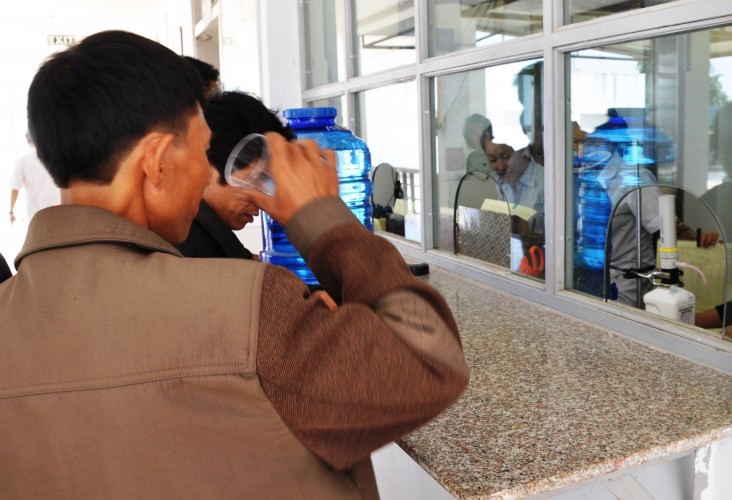
Bringing people and services under one roof is paying off for people living with HIV/AIDS in Ho Chi Minh City and other cities around Vietnam. In December 2011, USAID/Vietnam began working with the Ho Chi Minh City Provincial AIDS Committee and District 8 Preventive Medicine Center to integrate anti-retroviral treatment (ART), HIV testing and counseling (HTC), and methadone maintenance therapy (MMT) outpatient clinics.
Integration of traditional ARV with counseling and testing and methadone clinics has numerous advantages. Where successful, service integration can improve HIV testing and counseling among high-risk uninfected MMT clients, increase access to a broader set of services, and improve service quality, administrative processes, and cost efficiency. In addition, a single team of providers can address both HIV and MMT patient needs, reducing overall human resource requirements. The dual purpose teams can also maintain close relationships with patients, coordinate harm reduction counseling, and monitor adherence, drug-drug interactions, and side effects from both treatments. Combination services also increase efficiency by reducing space requirements, eliminating separate clinic visits and duplicate laboratory testing, and help build a cadre of providers with multiple skillsets.
Just prior to implementation of the pilot, the MMT clinic and outpatient clinic (OPC) in District 8 were in separate buildings, but located at the same site. At that time, there were 223 patients at the stand-alone MMT clinic, and 1,364 patients receiving ARV services at the OPC. The OPC was previously integrated with HTC, and tested from 120-140 clients per month. The number of full-time staff at the MMT, ARV, and HTC clinics were 17, 18, and 2, respectively (37 in total).
With the technical support from USAID/PEFPAR, and in collaboration with the HCMC PAC, the District 8 Preventive Medicine Center began to integrate the services in January 2012. The team outlined specific functions for each staff member and trained relevant individuals to handle multiple functions. Doctors, nurses, pharmacists, MMT case managers, and ARV adherence counselors received cross-disciplinary training. Clinic flow and infrastructure were redesigned to triage patients appropriately, to make patient flow more efficient, and to congregate providers by function to promote information exchange and knowledge sharing.
As of August 2012, the District 8 PMC successfully integrated ARV, HTC, and MMT services into a single unit.
"I worried a lot when facing many challenges related to the changes of infrastructure, personnel before implementing integration HTC, ART, MMT to a single unit at this District 8 PMC," said Dr. Pham Thanh Hieu, Chief of District 8 HTC-ART-MMT "However, at the time being, the integration is succeeded, every time I see the patients' eyes sparkled with safety and happiness when all their needs and health problems such as drug interactions, HIV testing and counseling... are solved at this site, conveniently and productively. I really experienced deeply the significant benefits the integration have brought to my patients, especially to those who are suffering both HIV/AIDs and opioid dependency. This integration really widens the door of chances for the HIV/AIDs and opioid dependent users as it increases access to a broader set of services, and improve service quality in a convenient and fruitful manner."
In addition to improving the quality of services and patient flow, the PMC increased MMT/ART client load by 10 percent, and reduced fixed costs by decreasing staffing from 37 to 30. Building on this experience, USAID/PEPFAR has helped integrate services in a similar way at clinics in Dien Bien, Hanoi, and Quang Ninh and will support the HCMC PAC to integrate MMT and ART in two additional USAID-supported sites in HCMC in 2013.







Comment
Make a general inquiry or suggest an improvement.